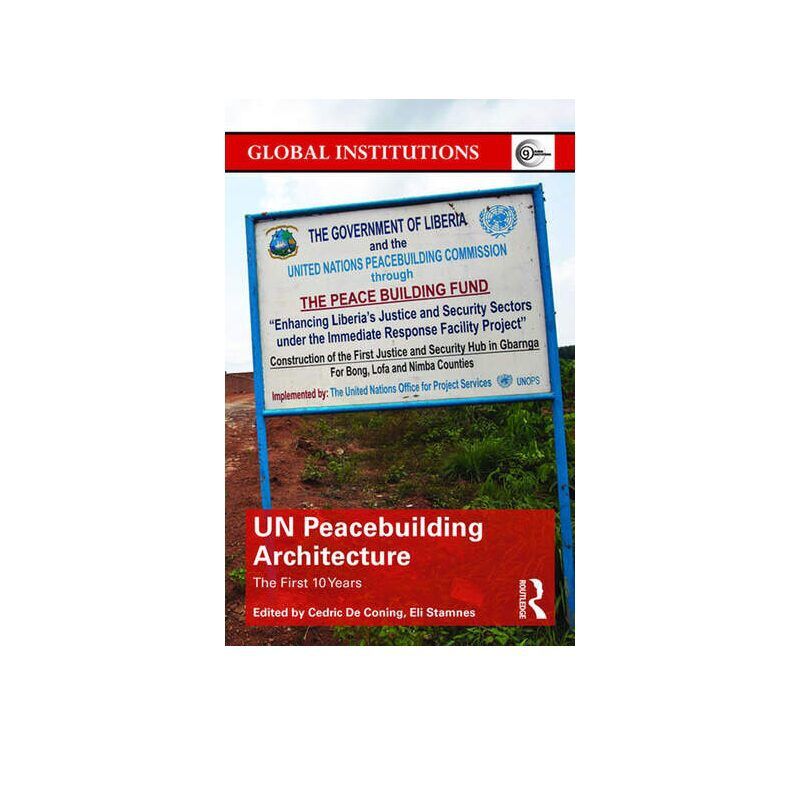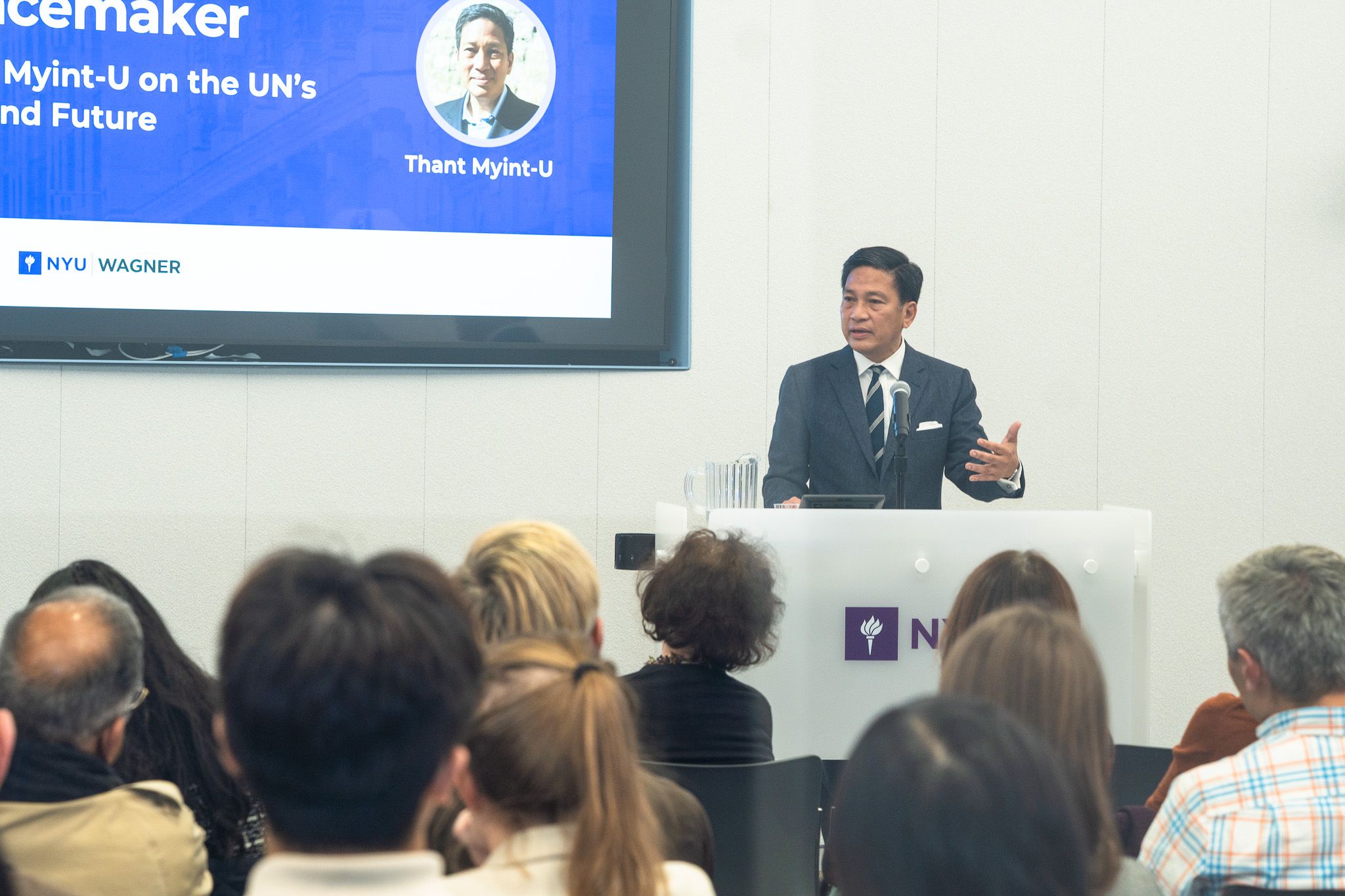The recently adopted landmark General Assembly and Security Council resolutions on the United Nations peacebuilding architecture tasks the entire UN system to work together to prioritize efforts to sustain peace in all its engagements.
As the UN moves forward to the implementation phase of the resolutions, Cedric de Coning and Eli Stamnes’ new book, entitled “UN Peacebuilding Architecture: The first 10 years,” provides timely analysis of the challenges, missed opportunities, and potential for improvement. During a recent visit to New York City, de Coning spoke with the Global Peace Operations Review’s Gizem Sucuoglu.
Gizem Sucuoglu: Your book comes at a time when the United Nations is in the process of improving its peacebuilding architecture to prioritize efforts to sustain peace. How does it fit in with the current developments and debates?
Cedric de Coning: The primary motivation of the book was to reflect on the impact of the UN’s peacebuilding architecture since its establishment. Our goal was to look beyond the more limited scope of the New York-based architecture, namely the Peacebuilding Commission (PBC), the Peacebuilding Fund (PBF), and the Peacebuilding Support Office, in order to assess the impact and effectiveness of the establishment of the architecture had on the UN system and the international peacebuilding community, both at the policy and practitioner levels. We shared earlier working paper versions of the chapters in the book with the Advisory Group of Experts (AGE), that were responsible for the analysis behind the recently adopted General Assembly and Security Council resolutions on the review of the UN’s peacebuilding architecture. In fact, the AGE had a similar approach, they looked at ways to improve the UN’s peacebuilding efforts across the system, and the potential of the architecture to help bring forward a longer-term vision of peace, including in the field. As such, the analysis and recommendations of our book fit nicely with the results of the peacebuilding review, and we hope it can be helpful to the UN system and wider peacebuilding community, as they move forward with the implementation of the resolutions on the peacebuilding review.
GS: From your perspective, what are the most significant achievements and failures of the peacebuilding architecture?
CdC: Our overall finding is that the UN’s peacebuilding architecture has contributed to peacebuilding being adopted as an overarching framework for peace consolidation; that is has contributed to improved coordination across the UN system, especially at country level; and that it has helped the UN system to realise that too much focus on resource mobilization generates unintended consequences, including reducing peacebuilding to a programmatic and technical undertaking, thus undermining attention to the political dimension. I think the bigger lesson here is that you cannot avoid the internal and regional political dynamics when you do peacebuilding in contexts like Burundi or South Sudan. In the last few years, it has become clearer to the broader peacebuilding community that peacebuilding is essentially a political project. This was not the case when the peacebuilding architecture was established a decade ago. Then peacebuilding was seen as something essentially technical, e.g. building institutions according to international best practice without being influenced by local politics. I am glad to see that the UN’s member states now unequivocally acknowledge the imperative of political solutions in the recent peacebuilding resolutions. One of our key recommendations is that the UN peacebuilding architecture should focus on its original intended role of addressing the root causes of conflict. For peacebuilding to be sustainable, the UN system must go beyond preventing imminent relapse, and engage with structural problems through a longer-term and system-wide perspective. This is the vision for sustaining peace.
For Peacebuilding to Be Sustainable, The UN System Must Go Beyond Preventing Imminent Relapse, and Engage with Structural Problems Through a Longer-Term and System-Wide Perspective.
GS: So peacebuilding is political, and its primary focus should be in the field. What is the potential of the Peacebuilding Commission in this case? Is there a role for a New-York based architecture?
CdC: The PBC has great potential for connecting political and policy level headquarters discussions with the national and local needs and priorities of specific countries and regions. It can bring realistic perspectives from the ground to New York, to nourish discussions and decisions at the Security Council, General Assembly and ECOSOC both on country situations and thematic issues. It can be a bridge between these principal organs, helping them to move forward jointly around a shared longer-term vision of sustaining peace. It can bring a medium and long-term perspective to ongoing peace efforts, and in so doing help to lift the discussion beyond immediate crisis management. It can host discussions that can help link humanitarian, development, security and peacebuilding action, especially in certain scenarios such as protracted displacements. It can ensure that the follow-up of processes such as the World Humanitarian Summit, the 2030 Agenda and the COP21 include a vision to contribute to sustaining peace.
One way the PBC could be more visually engaged in such efforts is if it had specific products of its own. For instance, the PBC can consider commissioning independent rapporteurs to produce country or thematic reports. Such objective reports on field-level progress towards sustaining peace in specific contexts will inform and focus PBC deliberations. These reports could also help the PBC to provide concise and focused advice to the Security Council during the formulation or renewal of peace operation mandates, particularly those with a prominent peacebuilding dimension. Finally, in the drawdowns of mission mandates, in scenarios such as the current one in Liberia, such reports can help the PBC to advise the Security Council on how best the peace can be sustained during the transition process, especially from a longer-term peacebuilding perspective.
GS: The book also highlights why the peacebuilding architecture’s potential has not been fully realized until now. Can you elaborate on this?
CdC: Yes. In fact, we have two chapters devoted to the founding and establishment of the peacebuilding architecture, and we have contributions by the first and last (when the research was undertaken) Assistant Secretary-Generals for peacebuilding that speak to this question. Our overall assessment is that the space for the peacebuilding architecture, and thus also for its further development and evolution, was and remains constrained by internal UN structural boundaries as well as the current turbulence in the state of global governance. As a result the Security Council and General Assembly are unlikely to entertain radical changes in the role and structure of the peacebuilding architecture. However, I must say that the recent resolutions passed by these two organs have gone further than our assessment anticipated. Although no major structural changes were considered, the degree to which the recent resolutions embraced the notion of sustaining peace and with it a broadened interpretation of peacebuilding that now includes prevention, goes beyond what our analysis suggested would be possible.
GS: As frequently underscored in the book, strengthening coordination across the UN system is a prerequisite for sustaining peace. What are the concrete steps that could be taken in this direction?
CdC: If we want to make the UN system better able to work together towards sustaining peace in specific country and regional contexts, then we need to focus more on pursuing coherence among different parts of the system. The first step is to have a shared understanding of the situation, informed by the rich variety of perspectives and disciplines represented by the different parts of the UN system engaged in a specific country or region. The next step is to have a predictable and regular process for generating a shared strategic objective, as well as a process for tracking and reporting the effects the system is having on the situation. The PBC can play a key role in bringing such information to the attention of Member States and the principle organs of the UN in New York, and generating political attention and direction to these processes. The recent peacebuilding resolutions also sent a strong message from Member States on the need to move towards better system-wide coherence. This has also been a recurrent theme during the informal dialogues for a new Secretary-General as well as for the new Security Council members
GS: Based on the book’s findings, what recommendations would you offer to those currently working on peacebuilding in the UN system?
CdC: I have mentioned two important recommendations already, firstly the need to have a medium- to long-term approach to sustaining peace, so that we can escape from being trapped in an iterative short-term crisis management approach focused on preventing imminent relapse. Secondly the critical importance of having a shared and coherent strategic objective, as well as a process of regularly adapting it, informed by a system for tracking the effects the effort is having on the situation we are trying to sustain. I would like to add three key recommendations from our book. That the PBC use its broad representative base to foster agreement among its members on ways to address external factors that undermine sustaining peace, such as soliciting and facilitating corruption and illicit financial flows, transnational organized crime and extractive industries, both globally and specifically in the countries on the PBC agenda. That the PBC give serious attention to incorporating regional approaches into its work, including developing a strategic partnership with the Peace and Security Council of the African Union, sub-regional organisations in Africa and African civil-society. And lastly, that the PBC help to empower national and local ownership by giving a greater role to the governments and civil society of the countries on the PBC agenda to undertake self-assessments, to brief the PBC on its visions, plans and progress, as well as its own perceptions of risks and challenges, including those posed by its regional and international partners, and by playing a leading role in monitoring its own progress towards sustaining peace.
GS: Who should be reading this book and why? What impact do you hope this book will have on the peacebuilding community?
CdC: There are only a few books that focus on the role of the UN in peacebuilding, and even fewer that have the UN peacebuilding architecture as its main subject of enquiry. In this context we hope that our book contributes to the institutional memory of the Member States and the entities that make up the UN system. Only a few of the people that currently make decisions that affect how the UN does peacebuilding have been involved when the UN peacebuilding architecture was founded and established. Even fewer will be around 5 and 10 years from now when the peacebuilding architecture is reviewed again. It is important for our shared knowledge to understand how the peacebuilding architecture has evolved over its first decade. In this context we hope that our book will be of value for fellow researchers, peacebuilding practitioners and policy makers in the UN system and in Member States, both those that are currently working to implement the review of the peacebuilding architecture as well as those that will become engaged in this work over the next decade.
Cedric de Coning is a senior research fellow with the Peace and Conflict Research Group at the Norwegian Institute of International Affairs and a peacebuilding advisor to the African Centre for the Constructive Resolution of Disputes (ACCORD) | Twitter: @CedricdeConing
Gizem Sucuoglu is a Senior Program Manager at the Center on International Cooperation | Twitter: @gizmous




